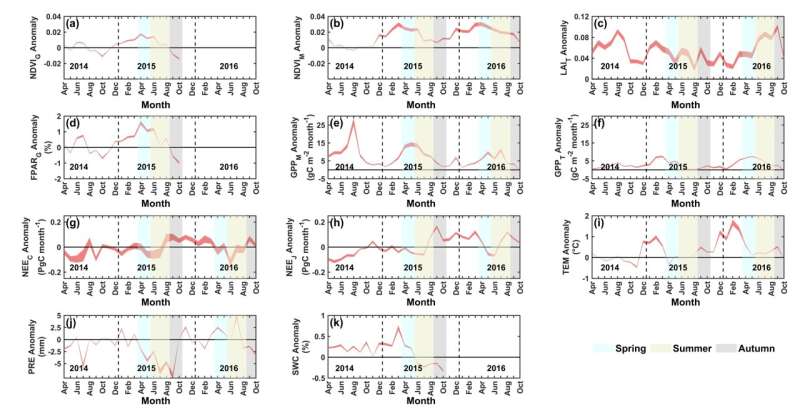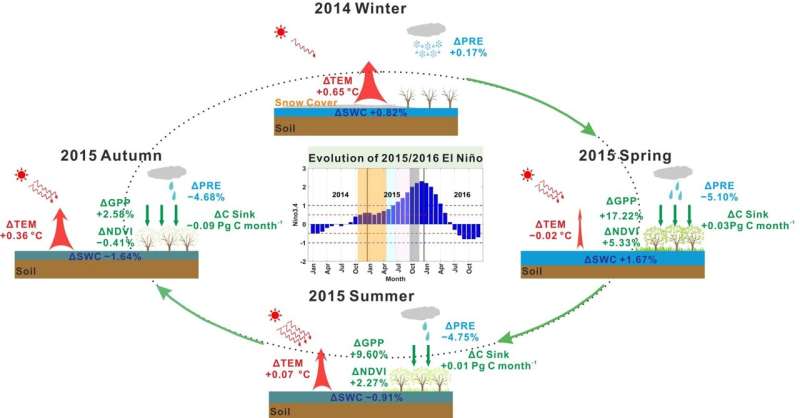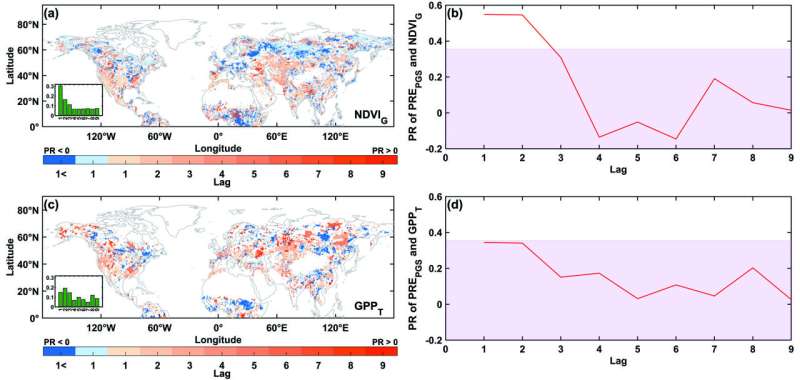This article has been reviewed according to Science X's editorial process and policies. Editors have highlighted the following attributes while ensuring the content's credibility:
fact-checked
peer-reviewed publication
trusted source
proofread
The role of seasonal compensation effects on mediating the land carbon sink in response to an extreme El Niño event

Based on multiple evidence from remote sensing observations, global ecosystem model simulations and atmospheric CO2 inversions, a study led by Dr. Fangzhong Shi and Dr. Xiuchen Wu (Faculty of Geographical Science, Beijing Normal University) has found continuous vegetation greening and a slight increase in land carbon sink during the maturation phase of the 2015/2016 El Niño event over the Northern Hemisphere.
The study reported average increases in net ecosystem exchange by 23.34% and 0.63% in spring and summer of 2015, and 6.82% in spring of 2016. The study is published in the journal Science China Earth Sciences.
The vegetation greening and increase in land carbon sink were attributable to the significant seasonal compensation effect. The favorable hydrothermal conditions in the winter of 2014 and the warmer and wetter spring in 2015 significantly stimulated vegetation growth in the early phase of the 2015/2016 El Niño event, and a reasonable water supply from the soil until early autumn was maintained.

Together, these factors would have compensated for the potential vegetation growth reduction in the subsequent summer and even autumn, when a warmer and drier climate negatively affected vegetation growth.
By comparison, this study found the seasonal compensation effect was much stronger than that in 1997 and 1998, and significantly alleviated the adverse impacts of the 2015/2016 El Niño event on vegetation growth during its maturation phase.

Finally, this study further revealed that the remarkable legacy effect of pre-growing-season precipitation on subsequent vegetation growth could last approximately two seasons (six months).
Those findings provide new insight into the crucial seasonal compensation effects on vegetation growth in regulating terrestrial functioning in response to episodic climate extremes, and open a valuable avenue for better understanding the land-atmosphere interactions in a warmer and drier future climate.
More information: Fangzhong Shi et al, Seasonal compensation implied no weakening of the land carbon sink in the Northern Hemisphere under the 2015/2016 El Niño, Science China Earth Sciences (2023). DOI: 10.1007/s11430-022-1224-1
Journal information: Science China Earth Sciences
Provided by Science China Press




















